Home>Storage Ideas>Storage Baskets>How To Make Full Hanging Baskets
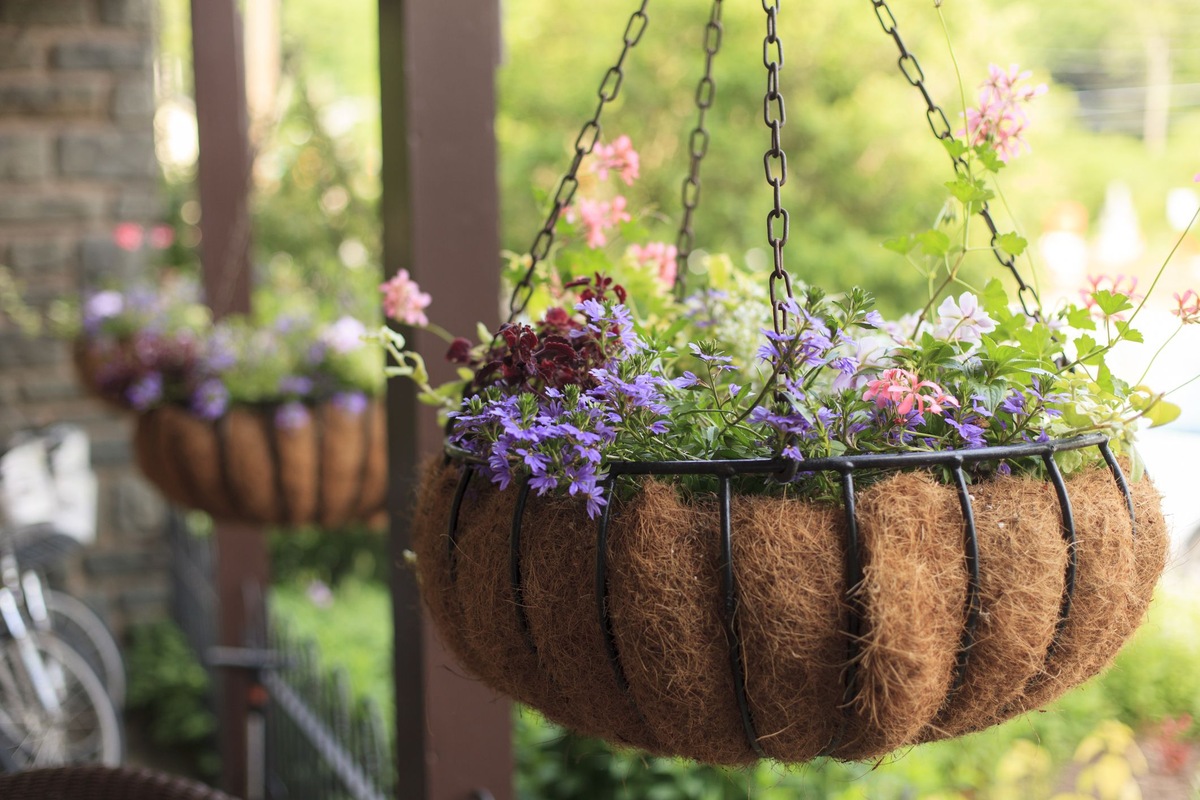

Storage Baskets
How To Make Full Hanging Baskets
Modified: January 6, 2024
Discover the secrets of creating stunning full hanging baskets with our step-by-step guide. Utilize our storage baskets to keep your space organized and clutter-free.
(Many of the links in this article redirect to a specific reviewed product. Your purchase of these products through affiliate links helps to generate commission for Storables.com, at no extra cost. Learn more)
Introduction: Brief Overview of Full Hanging Baskets
Welcome to the magical world of full hanging baskets! These stunning displays of cascading blooms can transform any space, whether it’s a patio, balcony, porch, or garden. Full hanging baskets are a fantastic way to add color, texture, and life to your outdoor areas, creating a vibrant and inviting atmosphere. In this article, we will explore everything you need to know about making full hanging baskets that will be the envy of your neighbors.
Full hanging baskets are essentially decorative plant arrangements that are suspended from hooks or structures. They typically consist of a basket or container filled with a variety of flowering plants, trailing vines, and sometimes even herbs or fruit-bearing plants. The plants in hanging baskets are carefully selected to complement each other and create a lush and voluminous display.
The beauty of full hanging baskets lies in their ability to make use of vertical space, effectively maximizing your gardening potential. They offer an opportunity to showcase a mix of colors, textures, and scents in a compact and eye-catching arrangement. Whether you have a small balcony or a large garden, you can easily create stunning hanging baskets that will make a bold statement.
One of the key benefits of full hanging baskets is their versatility. You can use them to beautify various areas of your outdoor space, including walls, fences, pergolas, or simply hang them from shepherd’s hooks or brackets. With the right selection of plants and proper care, you can enjoy an amazing display of flowers that will captivate everyone who sees them.
Full hanging baskets also offer the unique advantage of being easily movable. If you are not satisfied with the placement or want to change the look of your outdoor area, you can simply relocate the hanging basket to a different spot. This flexibility allows you to experiment with different arrangements and find the perfect location that enhances the visual appeal of your space.
Now that you have gained a glimpse into the wonders of full hanging baskets, let’s delve deeper and explore the various aspects involved in creating these captivating floral displays. From selecting the right basket and plants to planting, watering, and maintenance, we will guide you through each step, ensuring that you have all the knowledge to create stunning full hanging baskets that will delight you and your guests.
Key Takeaways:
- Create stunning full hanging baskets by selecting the right basket size and style, choosing plants that thrive in hanging environments, and preparing the basket with proper liners and drainage.
- Maximize the beauty and longevity of your hanging basket by providing regular watering, deadheading, and pruning, addressing common issues promptly, and appreciating the joy it brings to your outdoor space.
Read more: What Hanging Baskets Do Well In Full Sun
Selecting the Right Basket: Choosing the Right Size and Style
The first step in creating a beautiful full hanging basket is selecting the right basket. When it comes to choosing the size and style, there are a few key factors to consider.
Size: The size of the basket will depend on the space available and the number of plants you wish to include. Larger baskets will accommodate more plants and provide a more dramatic effect, while smaller baskets are better suited for compact spaces or when you want to create a more minimalist look. Keep in mind that the larger the basket, the more soil it can hold, which will help with moisture retention and plant growth. Aim for a basket that is at least 12 inches in diameter for a lush and full display.
Style: The style of the basket is a personal preference and should complement the overall aesthetic of your outdoor space. There are various options to choose from, including traditional wire baskets, woven baskets, hanging pots, and even decorative containers. Consider the material, color, and design of the basket to ensure it blends seamlessly with your existing décor.
Drainage: Ensure that the chosen basket has proper drainage holes or a built-in reservoir system to allow excess water to escape. Adequate drainage is crucial to prevent waterlogging and root rot. If the basket does not have drainage holes, you can drill some yourself or use a liner with drainage capabilities.
Sturdiness: Hanging baskets are exposed to the elements and can be subjected to wind, rain, and other weather conditions. Therefore, it’s important to choose a basket that is sturdy and durable. Look for baskets made from materials such as metal, plastic, or wire that can withstand outdoor conditions and maintain their shape over time.
Consider the Location: Take into account the location where the hanging basket will be placed. If it will be hanging in an area with strong winds, consider opting for a basket with a tighter weave or a more solid structure to prevent the plants from getting damaged.
Multiple Baskets: If you have a larger space to fill or prefer a more abundant look, consider hanging multiple baskets together. You can either hang them at different heights for a cascading effect or hang them side by side for a cohesive and lush display.
By selecting the right size and style of basket, you set a strong foundation for creating a visually stunning full hanging basket. Once you have chosen the perfect basket, the next step is to select the right plants that will thrive in a hanging basket environment. This will be explored in the next section.
Choosing the Right Plants: Selecting Plants That Thrive in Hanging Baskets
When it comes to creating full hanging baskets, selecting the right plants is essential for their overall beauty and success. You want plants that not only have beautiful blooms but also thrive in the unique conditions of a hanging basket environment. Here are some key factors to consider when choosing plants for your hanging basket:
Sunlight Requirements: Assess the amount of sunlight your hanging basket will receive throughout the day. Different plants have different sunlight requirements, ranging from full sun to partial shade. Choose plants that are compatible with the amount of sunlight available in the designated location.
Trailing or Cascading Plants: To create the desired cascading effect, incorporate trailing or cascading plants in your hanging basket. These plants will spill over the sides of the basket, adding an element of drama and beauty. Popular choices include trailing petunias, trailing verbena, ivy, and sweet potato vine.
Filler Plants: Filler plants add volume and texture to the hanging basket. They are typically low-growing and help create a full and lush look. Consider using plants like begonias, impatiens, or lobelia as fillers in your arrangement.
Focal Point Plants: Choose one or two plants to be the focal point or centerpiece of your hanging basket. These are usually larger, showier plants that draw attention with their vibrant blooms or unique foliage. Geraniums, fuchsias, gerbera daisies, and calibrachoas are excellent options for creating a focal point.
Consider Plant Combinations: Aim for a harmonious combination of plants that have similar growth habits, lighting needs, and water requirements. This will ensure that all the plants in the hanging basket thrive together. Consider using a combination of complementary colors to create interest and visual appeal.
Consider Seasonality: Depending on the time of year, you may want to choose plants that are appropriate for the season. For example, in spring and early summer, you can opt for vibrant annuals, while in fall, you may choose plants that offer warm hues and autumnal charm.
Consider Fragrance: If you want to add an extra sensory element to your hanging basket, consider incorporating plants with fragrant blooms or foliage. Lavender, sweet alyssum, and scented geraniums are some examples of plants that can add a delightful aroma to your hanging basket.
Remember to take into account the mature size of the plants when choosing them for your hanging basket. Avoid overcrowding the basket, as this can lead to stunted growth and poor airflow, which can increase the risk of disease. By carefully selecting plants that thrive in hanging baskets, you are setting the stage for a stunning display that will be the envy of all.
Next, we will explore the necessary steps for preparing the basket before planting and creating your full hanging basket masterpiece.
Preparing the Basket: Preparing the Basket with Liners and Drainage
Before you start planting your full hanging basket, it’s important to prepare the basket properly to ensure optimal growth and longevity for your plants. Here are the steps to prepare the basket with liners and drainage:
Liners: Liners are an essential component of a hanging basket as they help retain moisture and provide insulation for the plants’ roots. There are various types of liners available, including coco coir liners, sphagnum moss liners, and plastic liners. Coco coir liners and sphagnum moss liners are popular choices as they are organic, provide good drainage, and retain moisture well. Plastic liners, on the other hand, are more durable and don’t break down over time. Choose a liner that suits your preferences and budget.
To line the basket, start by moistening the liner to make it more pliable. Gently press the liner into the basket, ensuring that it covers all the sides and bottom. Trim any excess liner, leaving a small overhang at the top to help retain moisture.
Drainage: Proper drainage is crucial for the health of your plants. If your basket does not have pre-drilled drainage holes, you will need to create them yourself. Use a small drill or a sharp object to create several holes in the bottom of the basket. These holes will allow excess water to drain out, preventing waterlogging and root rot.
Alternatively, you can use a plastic liner with built-in drainage holes or create a homemade drainage system. For a homemade drainage system, place a layer of small rocks or broken pottery pieces at the bottom of the basket before adding the potting mix. This will create a reservoir for excess water to collect, ensuring that the plant’s roots are not sitting in standing water.
Additional Liners: If desired, you can include an additional layer of sphagnum moss or folded newspaper between the liner and the potting mix. This extra layer will provide more insulation and help retain moisture for the plants.
Preparing the basket with liners and proper drainage sets the foundation for a healthy and thriving full hanging basket. These steps ensure that the basket retains the necessary moisture for the plants while allowing excess water to escape. Once your basket is prepared, you can move on to selecting the right potting mix and fertilizer, which will be discussed in the next section.
Stay tuned to learn about the ideal potting mix and fertilizer for your full hanging basket creation!
Potting Mix and Fertilizer: Selecting the Right Potting Mix and Fertilizer for Optimal Growth
Choosing the right potting mix and fertilizer is vital for the health and growth of plants in your full hanging basket. These components provide essential nutrients, proper drainage, and adequate moisture retention. Here’s what you need to know about selecting the right potting mix and fertilizer:
Potting Mix: A lightweight and well-draining potting mix is crucial for the success of your hanging basket. Avoid using regular garden soil, as it can be too heavy and compact, leading to drainage issues. Instead, opt for a commercial potting mix specifically formulated for container gardening. These mixes are typically a combination of organic matter, perlite, vermiculite, and sometimes even coconut coir. They provide the necessary nutrients and excellent drainage while retaining moisture.
When selecting a potting mix, consider factors such as water retention, nutrient content, and the specific needs of the plants you have chosen. Some potting mixes are designed specifically for flowering plants or vegetables, while others are suitable for a wide range of plant types. Read the packaging or consult with a gardening expert to ensure you choose the right potting mix for your hanging basket.
Fertilizer: Hanging baskets require regular feeding to promote healthy growth and abundant blooms. You can choose between organic or synthetic fertilizers, depending on your preference. Slow-release fertilizers are particularly convenient for hanging baskets, as they provide a steady supply of nutrients over an extended period.
Look for a balanced fertilizer with an NPK ratio (nitrogen, phosphorus, and potassium) that suits the needs of your plants. For example, a balanced fertilizer with an NPK ratio of 10-10-10 would be suitable for most flowering plants. However, some plants may require a higher or lower nitrogen content depending on their growth habits.
Apply the fertilizer according to the instructions on the packaging, typically every 4-6 weeks or as recommended for the specific product. Avoid over-fertilizing, as this can lead to salt build-up in the potting mix, causing root damage and nutrient deficiencies. Always water your hanging basket before applying fertilizer to prevent damage to the plants’ roots.
Organic Alternatives: If you prefer to use organic options, there are various organic fertilizers available, such as compost, worm castings, fish emulsion, or seaweed extracts. These natural fertilizers can be beneficial for the overall health of the plants and promote soil fertility and microbial activity.
When it comes to potting mix and fertilizer, it’s crucial to follow the specific needs of your plants. Regular feeding with the right nutrients will ensure your plants thrive and produce stunning displays of flowers. In the next section, we will guide you through the step-by-step process of planting your full hanging basket.
Now that you have your potting mix and fertilizer ready, it’s time to dive into the exciting process of planting your full hanging basket!
Read more: How To Make Macramé Hanging Baskets
Planting the Basket: Step-by-Step Guide to Planting the Basket
Now that you have prepared your hanging basket with liners, drainage, and chosen the right potting mix and fertilizer, it’s time to start planting! Follow these step-by-step instructions to ensure success:
- Add Potting Mix: Fill the hanging basket with potting mix, leaving enough space at the top for the plants. Gently press down on the mix to remove any air pockets.
- Arrange the Plants: Begin arranging the plants in the basket, starting with the focal point plants. Place them towards the center or back of the basket, depending on the shape and size of the plants. Next, position the trailing or cascading plants around the edges, allowing them to spill over the sides of the basket. Fill in any gaps with filler plants.
- Planting Technique: Remove the plants from their containers and loosen the roots slightly. Create small holes in the potting mix using your fingers or a small trowel. Place each plant in its respective hole and gently firm the soil around the roots to secure them in place. Ensure that the soil is level and the plants are positioned at the same height as they were in their original containers.
- Spacing: Take care to space the plants adequately, allowing them room to grow and fill out the basket. Overcrowding can lead to poor airflow, increased risk of disease, and stunted growth. Refer to the plant’s labeling or consult a gardening guide for specific spacing recommendations.
- Watering: After planting, thoroughly water the basket, ensuring the potting mix is evenly moist. This will help settle the plants, aid in root establishment, and reduce transplant shock. Water until you see water start to drain out of the bottom of the basket.
- Trim and Tidy: Trim any excessively long or straggly stems to maintain a neat appearance. This encourages bushier growth and prevents the plants from becoming leggy. Gently remove any debris or fallen leaves from the surface of the potting mix.
- Care: Place the hanging basket in its desired location, taking into consideration the plant’s light requirements. Ensure the basket is securely hung or placed in a sturdy bracket. Water the basket regularly, keeping the potting mix consistently moist but not waterlogged. Monitor for any signs of pests, diseases, or nutrient deficiencies and address them promptly.
Be sure to read the specific care instructions for the plants you have chosen, as their needs may vary. Regularly inspect the hanging basket, adjusting the watering frequency and fertilization as needed. With proper care, your full hanging basket will flourish and provide a stunning display of color and beauty.
In the next section, we will explore proper watering techniques and necessary maintenance to keep your hanging basket looking its best.
When planting a full hanging basket, be sure to choose a variety of plants with different growth habits, such as trailing, upright, and mounding, to create a balanced and visually appealing arrangement.
Watering and Maintenance: Proper Watering Techniques and Necessary Maintenance
Proper watering and regular maintenance are essential for the health and longevity of your full hanging basket. Follow these tips to ensure your plants thrive:
Watering:
- Check the moisture level of the potting mix regularly by inserting your finger about an inch into the soil. If it feels dry, it’s time to water.
- Water the basket thoroughly, ensuring that the water reaches all the way to the bottom of the basket. This helps to ensure the roots receive adequate moisture.
- Pay attention to the weather conditions and adjust your watering schedule accordingly. During hot and dry periods, you may need to water more frequently to prevent the potting mix from drying out.
- Avoid overwatering, as this can lead to root rot and other plant diseases. Allow the top inch or so of the potting mix to dry out slightly before watering again.
- Consider using a watering wand or a watering can with a long spout to reach the plants in the basket more easily.
Maintenance:
- Regularly deadhead spent blooms to encourage continuous flowering and prevent the plants from diverting energy into producing seeds.
- Trim any leggy or overgrown stems to maintain a compact and tidy appearance. This also promotes branching and increases the fullness of the hanging basket.
- Monitor for pests such as aphids, mealybugs, or spider mites. If you notice any infestation, address it promptly by using appropriate insecticidal soaps or horticultural oils.
- Keep an eye out for signs of nutrient deficiencies, such as yellowing leaves or stunted growth. Depending on the specific needs of the plants, you may need to fertilize them more frequently or adjust the fertilizer type or dosage.
- Remove any fallen leaves or debris that accumulate in the basket to maintain cleanliness and prevent the growth of mold or fungal diseases.
- Regularly assess the health and vigour of the plants. If any plant appears weak or diseased, consider removing it to prevent the spread of potential issues to other plants in the hanging basket.
By following these watering tips and implementing regular maintenance, you can ensure the health and beauty of your full hanging basket throughout the growing season. Don’t be afraid to experiment and make adjustments based on the specific needs of your plants and your local climate conditions.
In the next section, we will explore tips for hanging and choosing the ideal placement for your full hanging basket.
Hanging and Placement: Tips for Hanging and Ideal Placement of the Basket
Choosing the right location and properly hanging your full hanging basket is crucial for its visual impact and the health of the plants. Consider the following tips when it comes to hanging and placing your basket:
Weight and Stability:
- Assess the weight capacity of the structure from which you will hang the basket. Ensure that it can support the weight of the basket when fully watered.
- Use sturdy hooks or brackets specifically designed for hanging baskets to ensure stability. Avoid flimsy or weak supports that could cause the basket to fall.
- Consider the wind exposure in the chosen location. If the area is prone to strong winds, secure the basket with additional support or choose a more sheltered spot to prevent excessive swinging and potential damage to the plants.
Sunlight Requirements:
- Choose a location that provides the appropriate amount of sunlight for the plants in your hanging basket. Some plants thrive in full sun, while others prefer partial shade. Ensure that the chosen spot aligns with the sunlight needs of the plants.
- Keep in mind that the ideal placement may vary depending on the time of year. Trees or structures that provide shade in the summer may allow for more direct sunlight during the cooler months.
Visual Impact and Aesthetics:
- Consider the overall visual appeal of the hanging basket in relation to its surroundings. Choose a location that allows the basket to be a focal point and enhances the overall aesthetics of the space.
- Hang the basket at a comfortable eye level where the full beauty of the plants can be appreciated. Avoid placing the basket too high or too low, as this may diminish its impact.
- For a more dramatic effect, hang multiple baskets together at different heights or in a staggered arrangement.
Accessibility for Maintenance:
- Ensure the hanging basket is easily accessible for watering, deadheading, and general maintenance. Hanging baskets that are too high or difficult to reach can become a challenge to care for properly.
- Consider using hooks or extendable pulley systems that allow you to lower the basket for maintenance and then raise it back up to its desired height.
Protection from Extreme Conditions:
- Avoid placing the hanging basket in areas with extreme temperature fluctuations or direct exposure to harsh elements, such as strong winds, heavy rainfall, or scorching sun. Extreme conditions can stress the plants and hinder their growth and overall health.
- Consider bringing the hanging basket indoors or providing some form of protection during severe weather conditions or during winter months.
By considering these tips when selecting the ideal location and hanging your full hanging basket, you can create a visually stunning display that thrives throughout the season. Remember to regularly assess the placement as the sunlight and weather conditions change over time.
In the next section, we will explore common issues that may arise with hanging baskets and provide troubleshooting solutions to help you overcome them.
Troubleshooting Common Issues: Solutions for Common Problems Encountered with Hanging Baskets
While full hanging baskets can bring beauty and vibrancy to any space, they may sometimes encounter common problems. Fortunately, there are solutions to these issues that can help you maintain the health and beauty of your hanging basket. Here are some common issues and their troubleshooting solutions:
Drying Out Too Quickly:
- If your hanging basket tends to dry out quickly, consider using a potting mix with good moisture-retaining properties.
- Increase the frequency of watering, especially during hot and dry periods.
- Consider using mulch or a layer of sphagnum moss on the surface of the potting mix to help retain moisture.
- Ensure that the basket and surrounding area are well-hydrated and not excessively exposed to direct sunlight or strong winds.
Overwatering and Waterlogging:
- Avoid overwatering your hanging basket, as this can lead to root rot and other fungal diseases.
- Ensure proper drainage by checking that the basket has sufficient drainage holes or a homemade drainage system.
- Allow the top inch or so of the potting mix to dry out slightly before watering again.
- Ensure that excess water is able to escape from the basket, preventing waterlogging.
Poor Growth or Leggy Plants:
- Increase the frequency of fertilization with a balanced fertilizer to provide the necessary nutrients for healthy growth.
- Ensure your hanging basket receives adequate sunlight according to the plants’ requirements.
- Consider pinching back or trimming leggy stems to encourage bushier growth and promote a fuller appearance.
- Check for any signs of pests or diseases and address them promptly to prevent stunted growth.
Yellowing Leaves or Nutrient Deficiencies:
- Consider adjusting the fertilization schedule or increasing the dosage to address nutrient deficiencies.
- Select a fertilizer with the appropriate ratio of nutrients for the specific needs of your plants.
- Inspect the plants for any signs of pests or diseases that may be causing nutrient deficiencies and treat them accordingly.
- Ensure your hanging basket receives adequate sunlight, as inadequate light can also cause yellowing leaves.
Pest Infestation:
- Regularly inspect your plants for signs of pests, such as aphids, spider mites, or mealybugs.
- Treat infestations promptly with appropriate insecticidal soaps, horticultural oils, or organic alternatives like neem oil.
- Consider implementing preventative measures, such as regularly spraying the plants with a mild soap solution or introducing beneficial insects to control pest populations.
By being proactive and addressing these common issues, you can maintain the health and beauty of your hanging basket. Regular monitoring, proper care, and timely intervention will ensure that your plants thrive and deliver a stunning display throughout the growing season.
In the final section, we will provide tips for maximizing the beauty and longevity of your full hanging basket.
Read more: How To Hang Baskets On The Wall
Enjoying Your Full Hanging Basket: Tips for Maximizing the Beauty and Longevity
Now that you have put in the effort to create a gorgeous full hanging basket, it’s time to sit back, relax, and enjoy the beauty it brings to your outdoor space. To ensure your hanging basket continues to impress and thrive, follow these tips for maximizing its beauty and longevity:
Regular Watering:
- Consistently water your hanging basket, ensuring the potting mix remains evenly moist. Avoid letting the potting mix completely dry out between waterings.
- Water at the base of the plants to prevent wetting the leaves, which can lead to fungal diseases.
- Consider using self-watering devices or drip irrigation systems to provide a steady supply of water, especially during hot and dry periods.
Deadheading and Pruning:
- Regularly deadhead spent blooms to encourage continuous flowering and prevent the plants from diverting energy into seed production.
- Trim or pinch back leggy stems to promote bushier growth and maintain a compact and tidy appearance.
- Remove any yellowed or diseased leaves to prevent the spread of diseases and maintain overall plant health.
Fertilizing:
- Continue to provide regular feeding to the plants in your hanging basket. Follow the instructions on the fertilizer packaging for the appropriate dosage and frequency.
- Consider supplementing with liquid fertilizers or foliar sprays to provide a quick nutrient boost for your plants.
- Monitor for nutrient deficiencies and adjust the fertilization regimen accordingly.
Protection from Extreme Weather:
- During periods of extreme weather, such as intense heatwaves or heavy rain, consider providing additional protection to your hanging basket.
- Move the basket to a sheltered area or bring it indoors temporarily to prevent damage to the plants.
- For hanging baskets that are not easily movable, consider using shade cloths or temporary coverings to shield the plants from excessive sunlight or heavy rainfall.
Regular Inspection:
- Regularly inspect your hanging basket for signs of pest infestations, diseases, or nutrient deficiencies.
- Address any issues promptly by using appropriate treatments or seeking advice from gardening experts.
- Monitor the overall health and appearance of the plants, adjusting care practices as needed.
Appreciate and Enjoy:
- Take the time to admire and appreciate the beauty of your hanging basket. Relax near it, host gatherings, or simply enjoy the visual feast it provides.
- Capture the beauty with photographs to document the progress and growth of your hanging basket throughout the season.
- Remember to share the joy by inviting others to admire your creation and share gardening tips and experiences.
By following these tips, you can maximize the beauty and longevity of your full hanging basket. With proper care and attention, it will continue to bring joy, color, and life to your outdoor space for many months to come.
As a final note, don’t be afraid to experiment and try out new combinations of plants and designs in future seasons. Gardening is a wonderful journey of creativity and discovery. Enjoy every step of it!
Now go ahead and showcase your stunning full hanging basket to the world!
Conclusion: Final Thoughts and Encouragement for Creating Beautiful Hanging Baskets
Congratulations on taking the journey to create beautiful full hanging baskets! These stunning displays of cascading blooms have the power to transform any outdoor space into a vibrant oasis of color and life. As you embrace this art form, here are some final thoughts and encouragement to inspire you on your hanging basket journey:
Creating full hanging baskets is both an art and a science. It requires a blend of creativity, knowledge, and care for the plants you choose. It is a chance to showcase your personal style and create a captivating masterpiece that brings joy to all who see it.
Remember to choose the right basket that suits your style and the space you have available. Consider the plants carefully, selecting ones that thrive in hanging baskets and complement one another in terms of colors, textures, and growth habits.
Give attention to the preparation of the basket, ensuring that it has proper liners and adequate drainage. Use a high-quality potting mix and feed your plants with the right fertilizer to support their growth and vitality.
As you plant your hanging basket, pay attention to arrangement and spacing for optimal growth and visual impact. Regularly water, deadhead, and prune your plants to maintain their health and encourage continuous blooming.
Be prepared to troubleshoot common issues that may arise along the way, such as drying out or overwatering. Address these challenges promptly and adjust your care practices accordingly.
Find the ideal placement for your hanging basket, taking into account sunlight requirements, stability, and visual appeal. Choose a location that allows you to enjoy the beauty of the basket while being easily accessible for maintenance and care.
Keep in mind that gardening is a learning experience. Embrace the journey and be open to trying new combinations of plants and designs in future seasons. With each hanging basket you create, you gain valuable knowledge and skills that will enable you to continue refining your techniques and creating even more stunning displays over time.
Lastly, take the time to appreciate and enjoy the beauty that your hanging basket brings to your outdoor space. Relax in its presence, share it with others, and take pride in the masterpiece you have created. Gardening is not just about the end result; it is also about the joy and fulfillment that comes from nurturing and witnessing the growth of your plants.
So, let your creativity bloom and your gardening skills flourish as you embark on the journey of creating beautiful full hanging baskets. May your creations bring endless delight and inspire others to explore the beauty of gardening.
Frequently Asked Questions about How To Make Full Hanging Baskets
Was this page helpful?
At Storables.com, we guarantee accurate and reliable information. Our content, validated by Expert Board Contributors, is crafted following stringent Editorial Policies. We're committed to providing you with well-researched, expert-backed insights for all your informational needs.
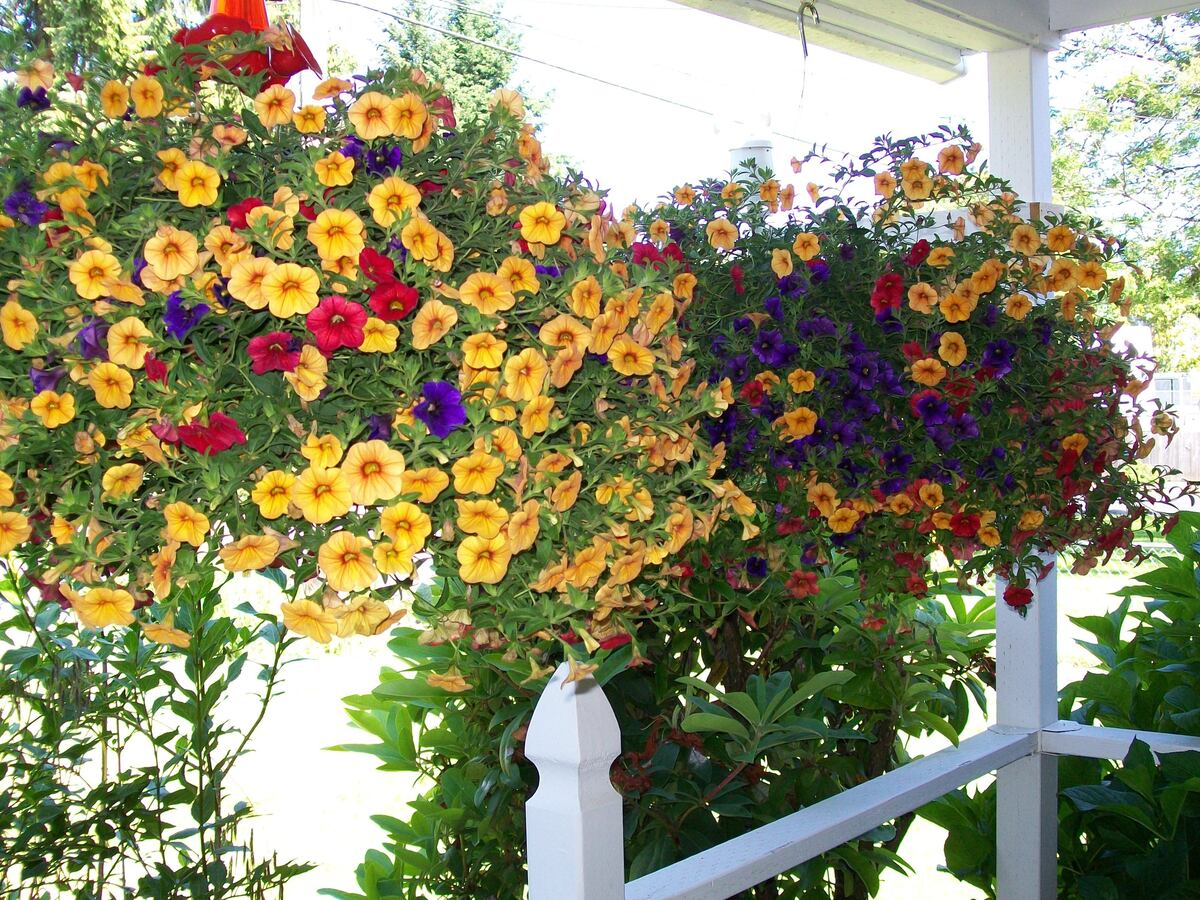

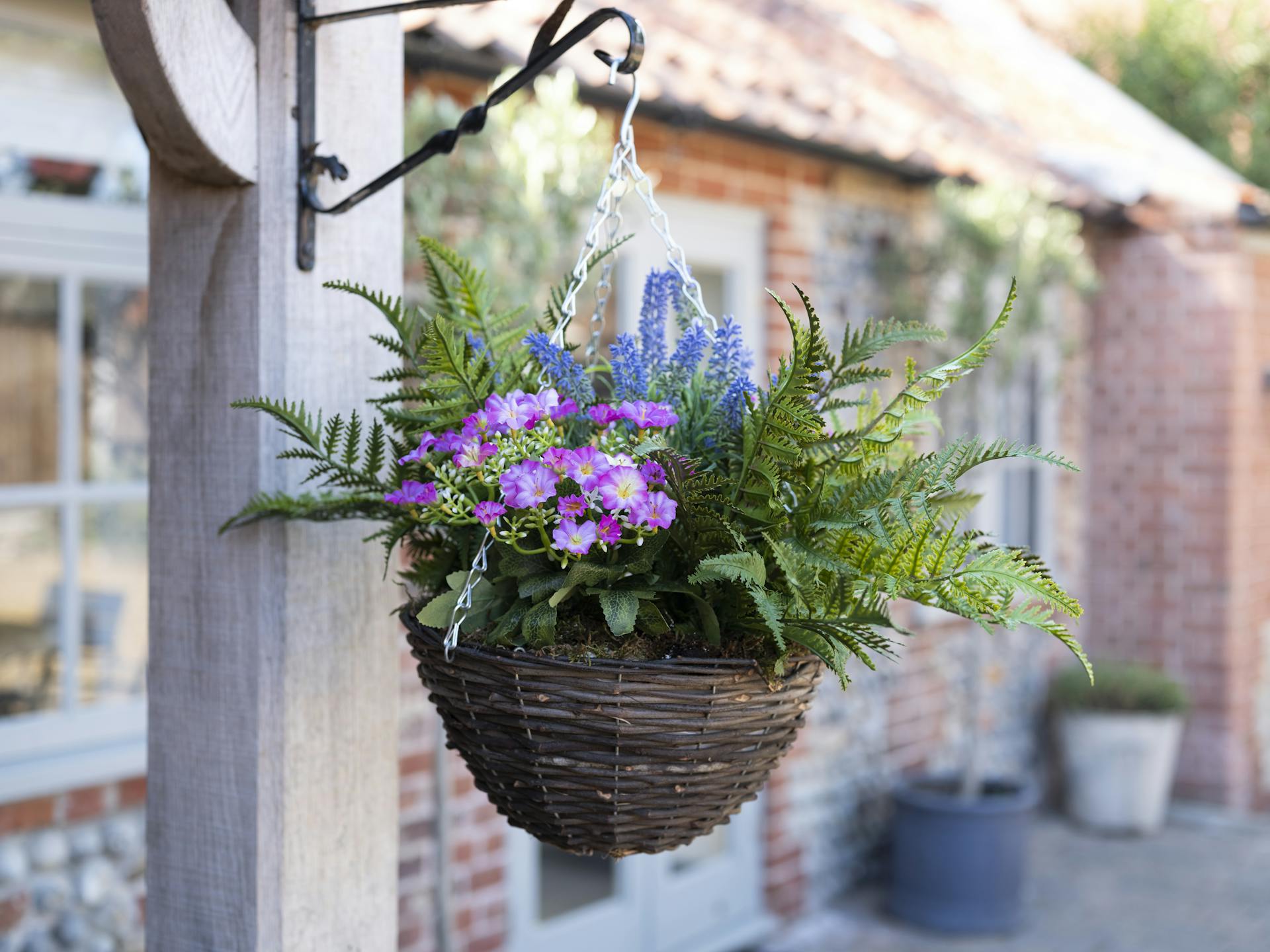
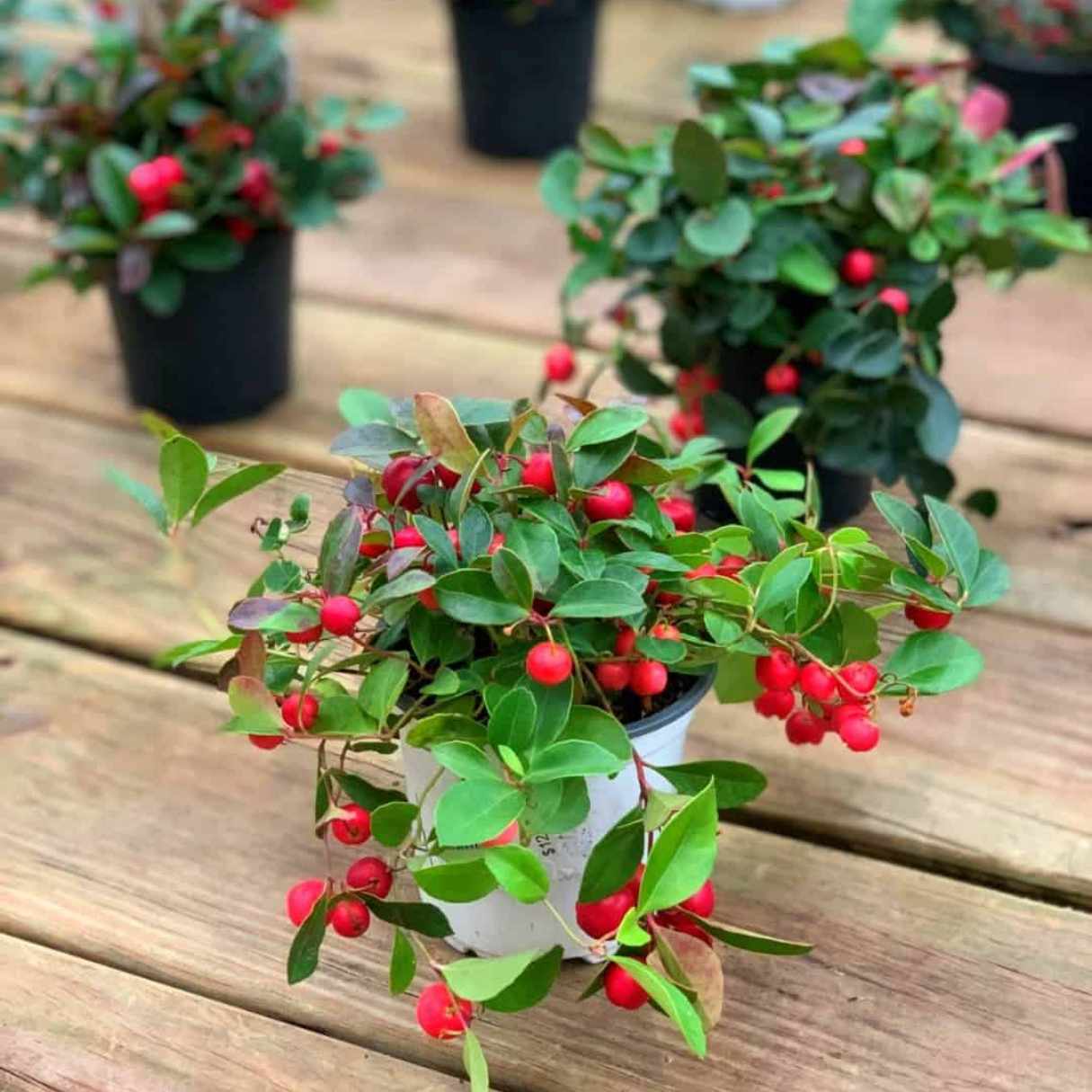
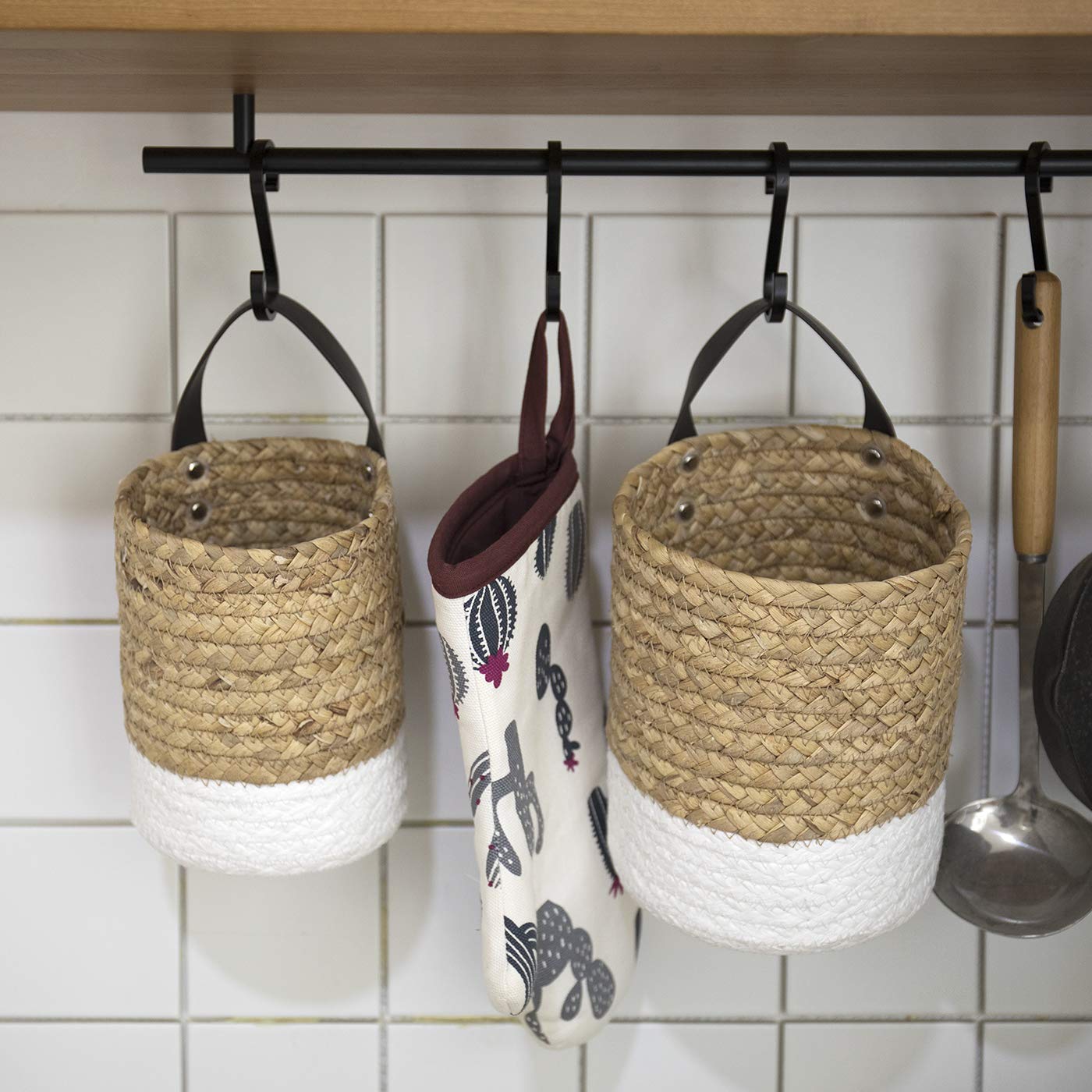
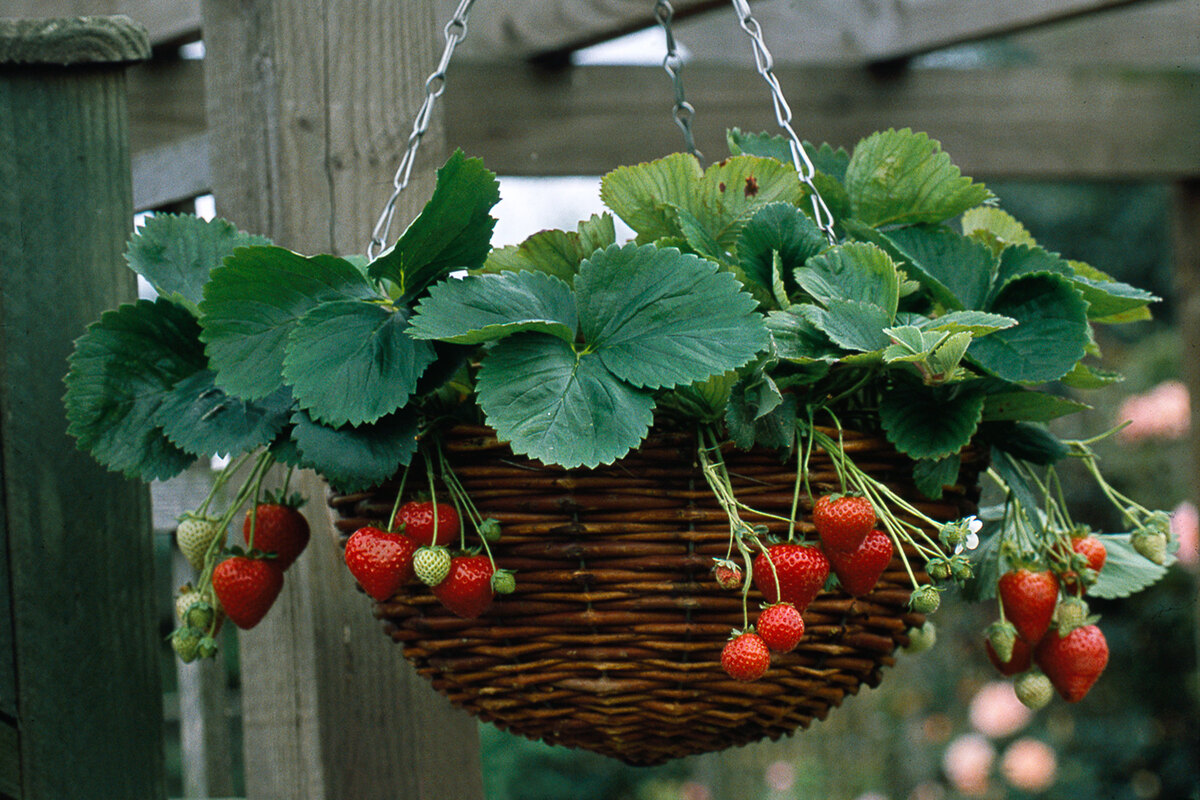
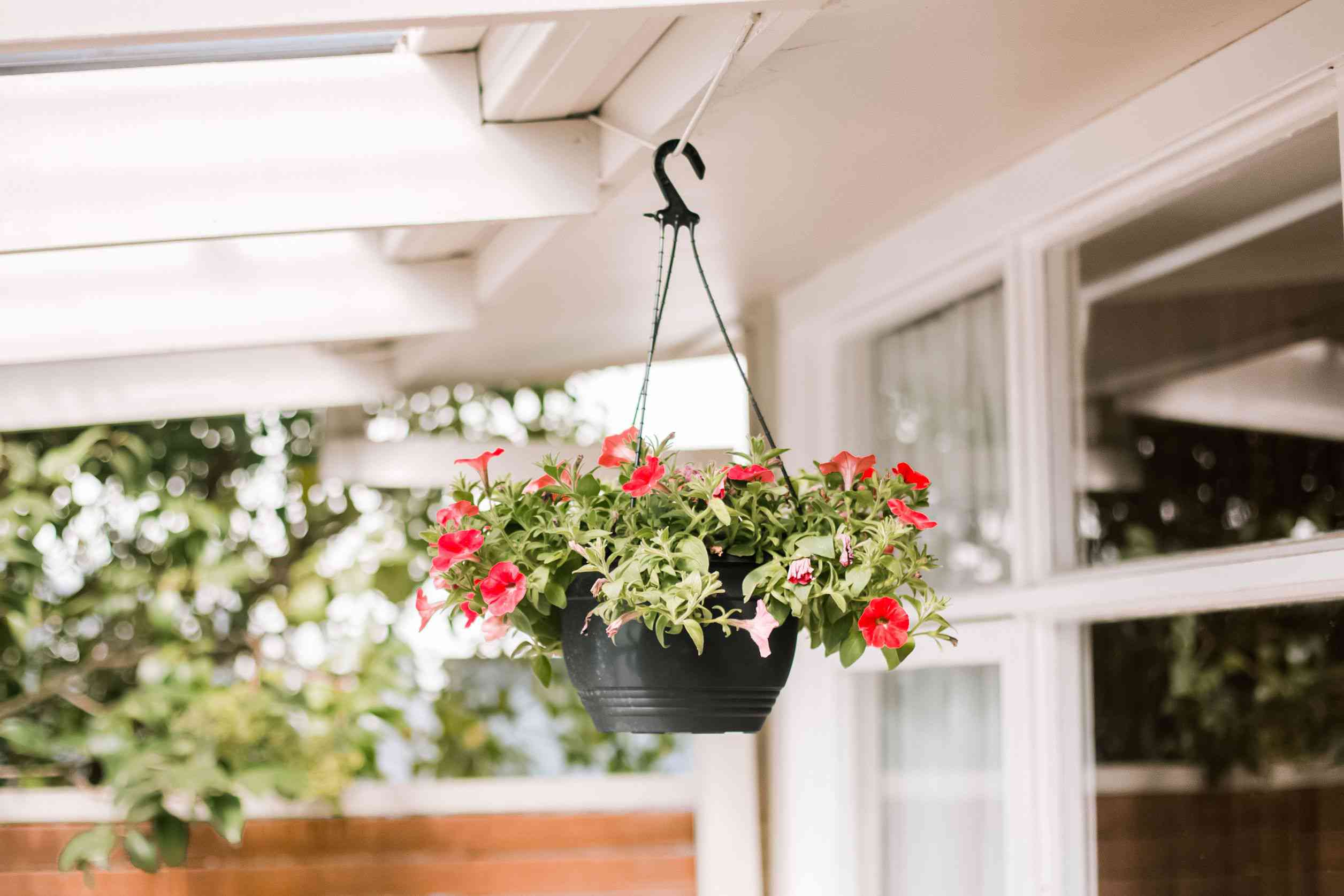
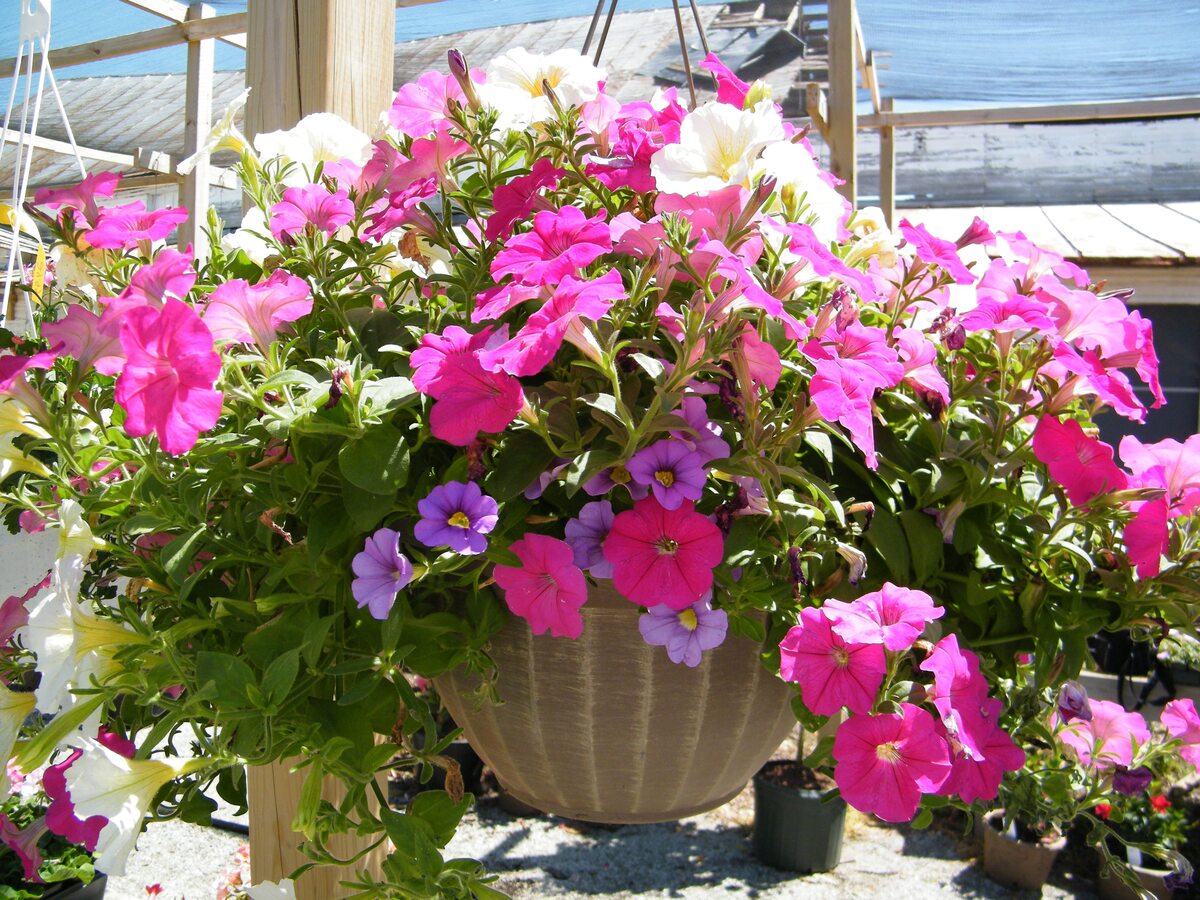
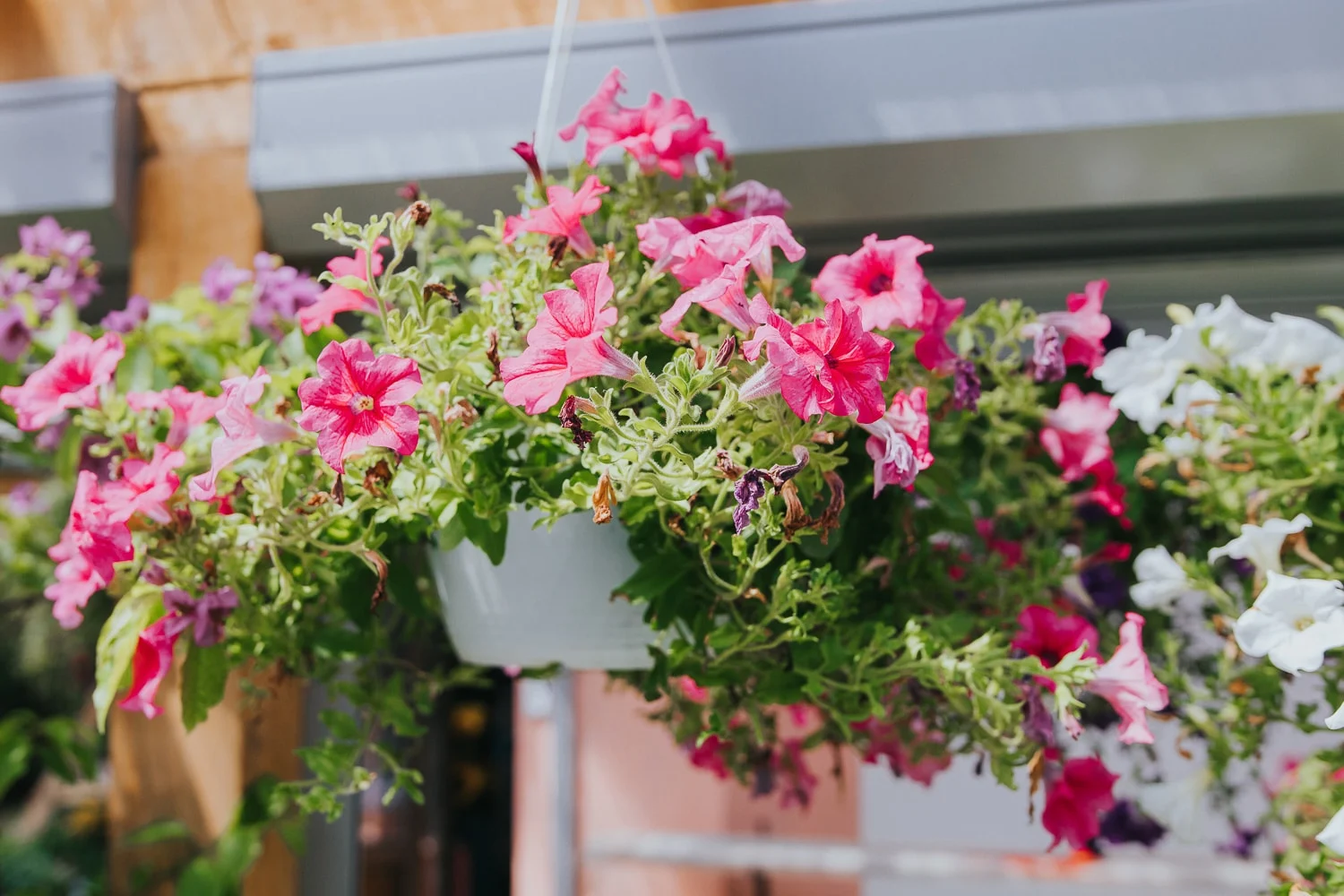
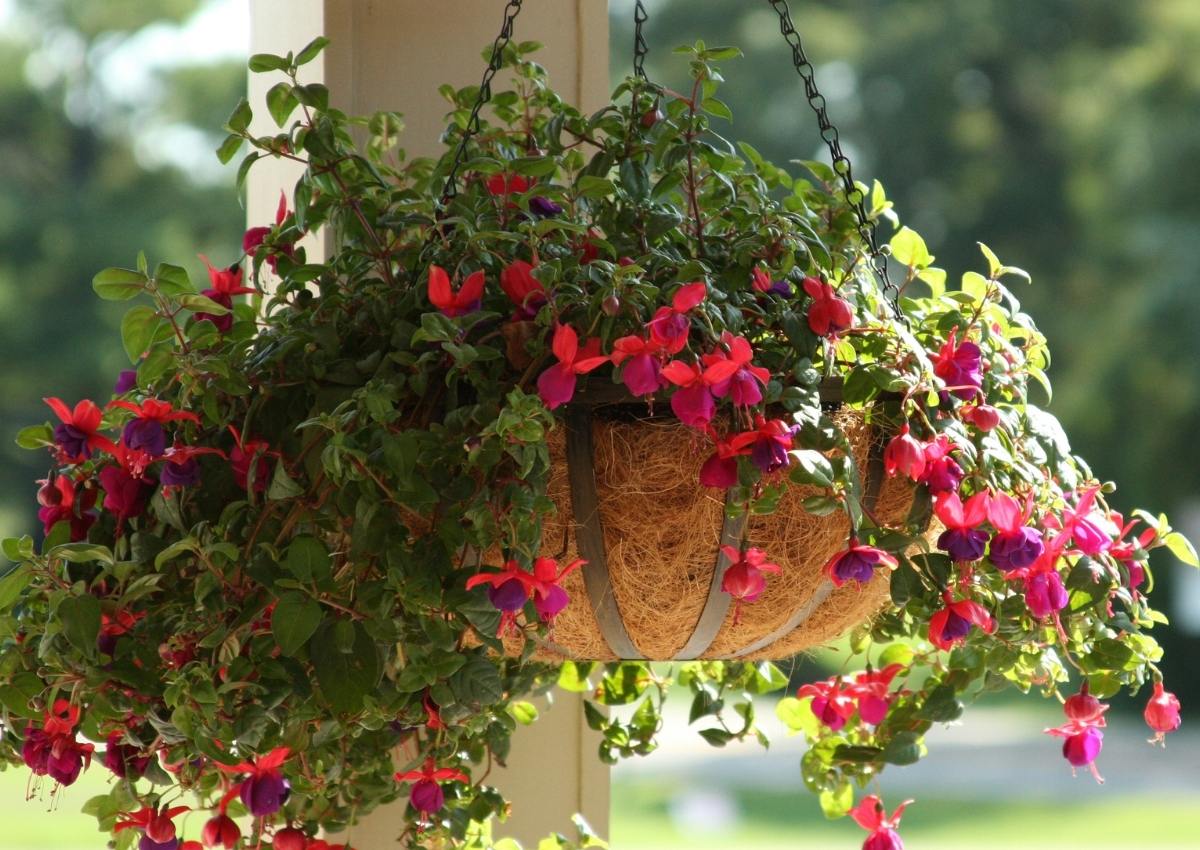

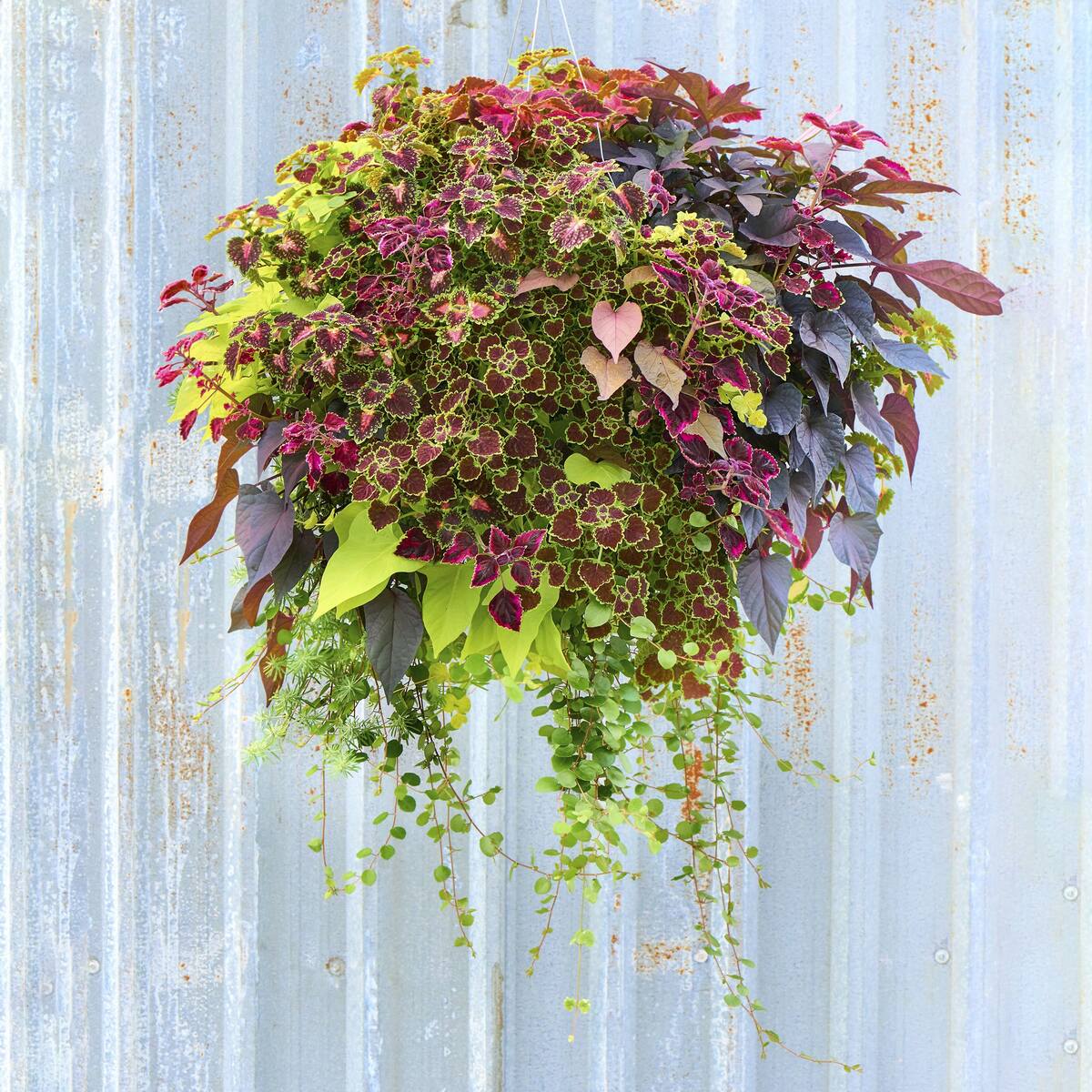
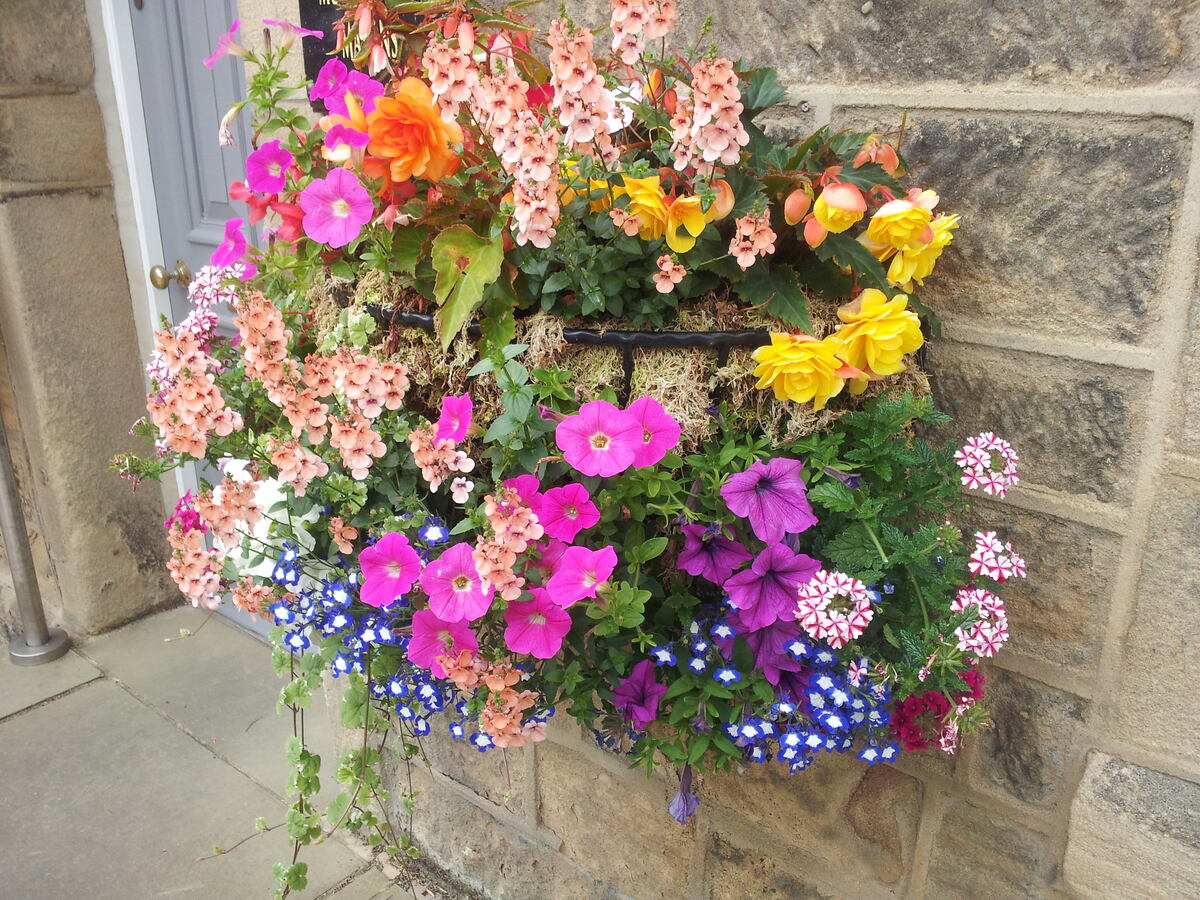

0 thoughts on “How To Make Full Hanging Baskets”